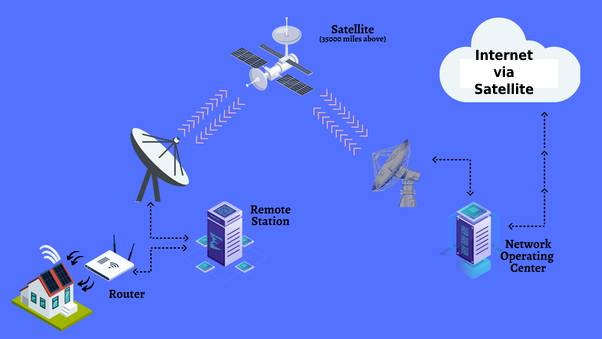
July 6 2021: India’s Digital Communications Commission (DCC) has cleared the harnessing of satellite connectivity to provide Internet services in remote areas where laying optical fibre networks is not feasible.
DCC has specifically okayed the proposal of the government-owned and operated Bharat Broadband Network, commonly known as BharatNet, to provide broadband services to gram panchayats in villages in 16 states in a public private partnership mode.
Bharat Broadband Network is the world’s largest rural broadband network and aims to provide broadband connectivity to 2.5 lakh gram panchayats.
Till now, 1.56 lakh out of the 2.5 lakh village panchayats have been connected with broadband. A lakh is 100,000.
The 16 states under the satellite-based scheme are — Kerala, Karnataka, Rajasthan, Himachal Pradesh, Punjab, Haryana, Uttar Pradesh, Madhya Pradesh, West Bengal, Assam, Meghalaya, Manipur, Mizoram, Tripura, Nagaland and Arunachal Pradesh.
Cellular backhaul
DCC has also approved cellular backhaul connectivity via satellite through Very Small Aperture Terminals or VSAT for telecom services as per recommendations made by the Telecom Regulatory Authority of India (TRAI) in a paper entitled ‘Provision of Cellular Backhaul Connectivity via Satellite Through VSAT Under Commercial VSAT CUG Service Authorization’ in July 2020
PTI reports that this decision will allow commercial VSAT CUG (closed user group) service providers to provide such cellular backhaul connectivity to telecom operators. It will help such operators to connect their mobile towers in difficult terrain by using satellite services through VSAT rather than investing in their own cable.
There is at least one Indian entity that is almost ready to step into this breach and offer satellite -based internet – the Bharti ( Airtel) – owned OneWeb.
TechNotes from the TRAI paper:
Satellite communication for backhaul purpose is a niche solution deployed in fringe areas of the network, usually in rural areas and difficult terrains. Satellite-based backhaul solution is provided through the VSAT Hub connecting to the base station, and services can be deployed rapidly.
The VSAT terminal is connected via satellite directly to the aggregator (Hub), from where the traffic is carried on the terrestrial network to the core network elements.
The cellular industry has also evolved a mechanism called “Cell-onWheels”. This is widely used by mobile operators as it has the ability to set-up a cellular-base station, mounted on a moving vehicle and can be moved to any area where immediate coverage is required. The area could be a disaster-hit area, or it could be an area where there is overflowing traffic, which the existing base stations are unable to handle. Adding a VSAT backhaul to the “Cell-on-wheels” concept makes it truly mobile.
Such a combination can make the base station mobile to any location and can be setup and made operational in a very short time.
Similarly, a Wi-Fi hotspot of an Access service provider can have a VSAT-based connectivity and can be easily powered by a solar system and can be deployed in the remotest part of the country to provide internet access. 2.4 As per the present licensing regime, the backhaul provisioning is to be done by the Access service providers themselves under the Access Service authorization.
Further, the telecom service provider providing the mobile services under the Access Service authorization is permitted 5 to obtain the backhaul bandwidth from any of the National Long Distance (NLD) service providers. The Commercial VSAT CUG service licensees are not permitted to provide backhaul connectivity to the mobile operators.